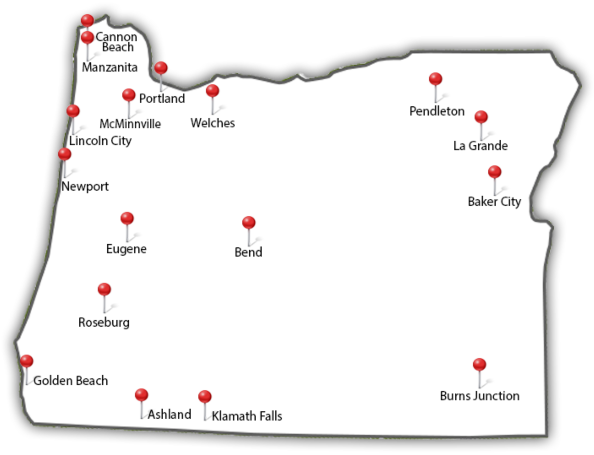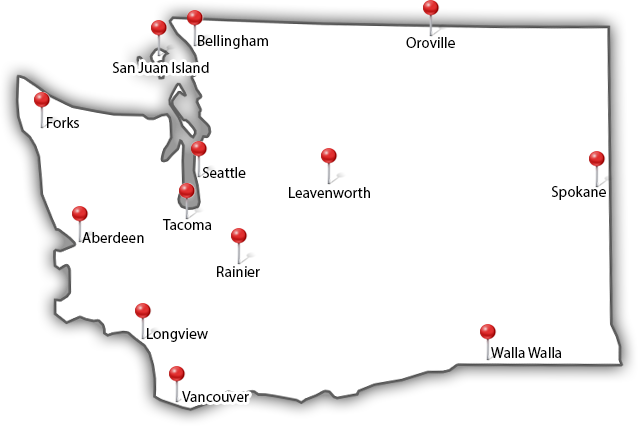Is My Tree Dead?
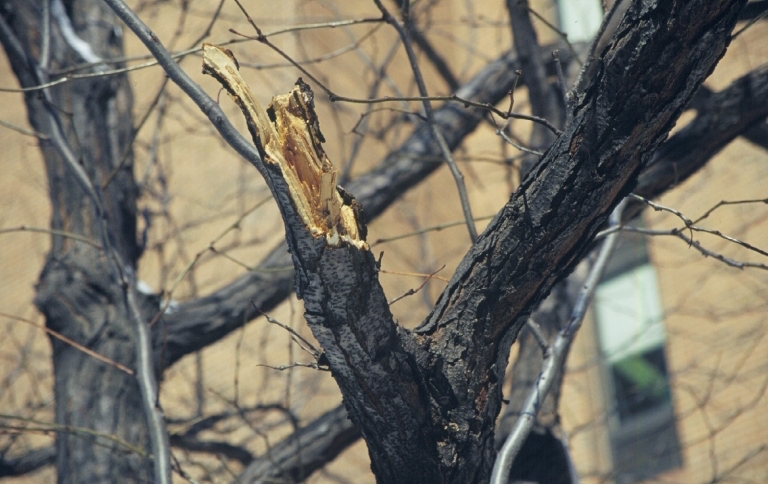
Trees provide shade, help freshen the air, and even add value to your property. We all want our trees to stay strong and healthy, but what should you do if you think one of your trees might be dead?
Dead trees don’t just look unattractive, they can actually pose a safety risk. Dead trees are more fragile. They drop branches easily and may even fall completely if not taken care of properly.
Today, I’ll show you how to tell if your tree is dead, and what you can do to keep your home, property, and family safe.
What Causes Trees to Die?
Trees live hundreds of years, right?
Many of them can, but damage and diseases can unfortunately kill a tree prematurely. In an ideal world, you’d notice the warning signs early on.
When a tree is dying, the cause of the problem usually starts underground with the roots and soil. Luckily, you can often see signs of tree death and disease above ground.
Here are some of the most common reasons why trees die:
Too Much or Too Little Water
 Making sure your tree gets enough water is especially important when it’s young. Too little water can dry a tree out, while too much can drown it.
Making sure your tree gets enough water is especially important when it’s young. Too little water can dry a tree out, while too much can drown it.
How much water your tree needs depends on the type of tree you have and where you live. The Arbor Day Foundation has some helpful tips for how much to water your tree at each stage of its growth.
Contact your local certified arborist if you have more questions about how to water your tree.
Changes in the Soil Grade
Changes in the soil level around your tree can affect how much water and nutrients the tree can absorb. That’s because trees’ primary feeding roots are usually located in the top six inches of soil. Changing the soil grade by even just a few inches can create a problem.
If you’re thinking of adding soil to your yard, be careful. Avoid adding too much near your tree if you can.
Root Damage
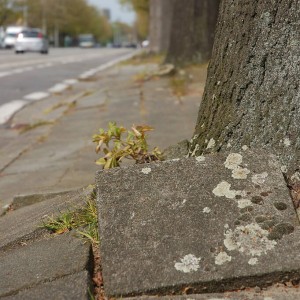 Trees need their roots to absorb nutrients and even remain standing. Big trees have strong, sturdy roots, but even those roots can be damaged.
Trees need their roots to absorb nutrients and even remain standing. Big trees have strong, sturdy roots, but even those roots can be damaged.
If you have frequently driven over or parked on a tree’s roots, there’s a chance they were damaged.
Not only can the weight of a car damage roots, but all that weight also compacts the soil beneath it, making it harder for the tree to get the water, oxygen, and other nutrients it needs from the soil.
Pouring concrete, laying asphalt, or paving over tree roots can cause similar problems. If tree roots don’t have room to grow, or something is preventing them from feed from the soil, you may have a problem.
Improper Planting or Transplanting
Young trees are especially sensitive, so planting and transplanting them can be risky. A couple common mistakes are:
- Digging a too shallow or too deep hole
- Packing the soil down too hard after planting
Both can smother the tree and prevent proper root growth.
Tip: Any time you plant or transplant a tree, be careful of the root ball (the tangle of roots at the bottom of a young tree). If there is burlap or twine tied around the roots, remove it carefully. Then, gently loosen and separate the root ball just enough to help the roots spread out before you place the tree in the ground.
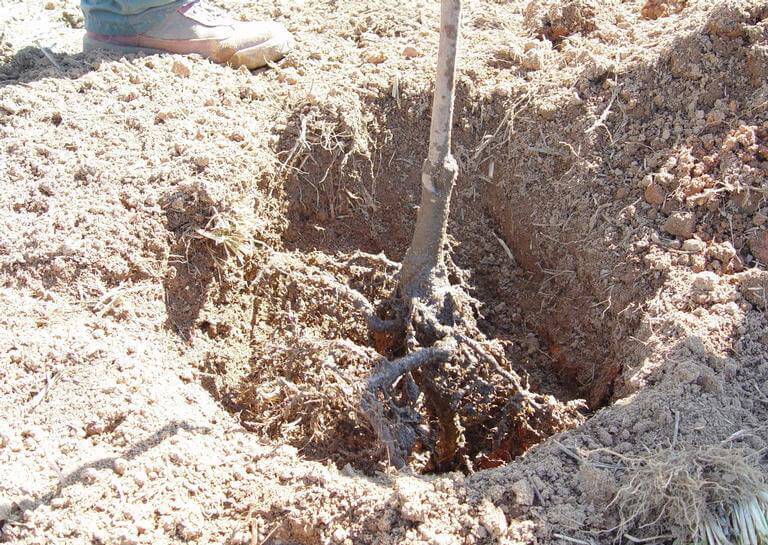
Photo: Anthony LeBude, NC State University, Bugwood.org
What Does a Dead Tree Look Like?
The warning signs will be slightly different depending on what type of tree you’re dealing with. Usually, though, you’ll be able to tell if there’s something wrong.
What should you look for?
Falling Leaves or Needles
A tree that is dying or dead often loses its leaves or needles very quickly and suddenly. Or it has no foliage whatsoever, even during a time of year when it should.
 Changing Colors
Changing Colors
Unexplained discoloration of the foliage is another common sign of stress or disease — usually one of the first ones you’ll notice.
Brown, multi-colored needles are a common sign of sickness in conifer trees.
Cracks and Splits
Big cracks or splits in the structure of the tree can be a sign that the tree is dead, especially if other warning signs are also present or if the crack is in the trunk.
Changing Bark
A strange or different bark texture can also spell trouble. Tree bark is often a good indicator of the tree’s overall health. If bark is missing, loose, dry, or brittle, be concerned. When branches lose their bark, it means those branches are most likely dead.
Infections and Infestations
Animals and fungi often start taking over dead trees too. Fungus usually only grows on decaying wood, so keep an eye out for mushrooms!
Insects like carpenter ants and beetles often set up camp in dead wood too. Look for rows of small holes in the wood or places where wood has clearly been eaten away:
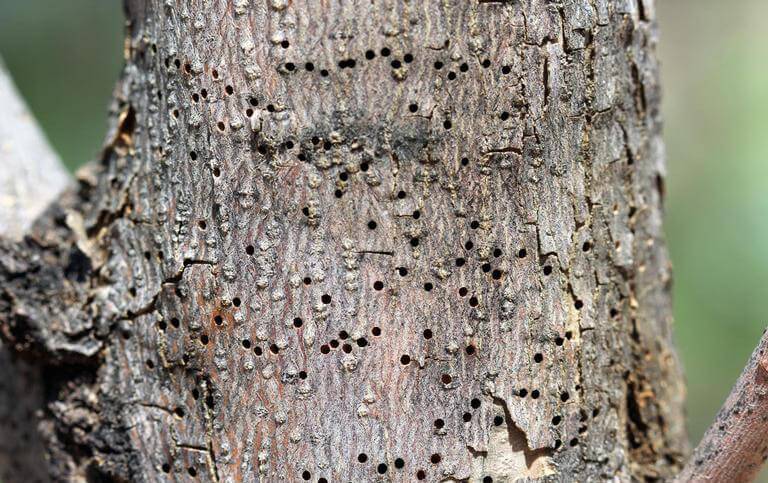
Photo: Whitney Cranshaw, Bugwood.org
Rotting Wood in the Trunk
A weak or spongy trunk can be a sign that a tree is rotting from the inside. If you notice this, call your local certified arborist right away. Rotting in the trunk is a sign that your tree may no longer be stable. You’ll want to get it taken care of before branches start falling, or worse, the whole tree comes down.
What Can I Do if My Tree Is Dead?
If your tree is dead, your best option is to have a professional come and remove it safely. If it’s a large or precariously positioned tree, you’ll want to do this as soon as possible.
If your tree is simply old, sick, or just unstable, you may have other options besides tree removal, such as cabling and bracing. Depending on the cause and extent of the damage, you might be able to salvage your tree or at least increase its life.
No matter what state your tree is in, an arborist, like us at Northwest Arbor Culture, can help you determine the best course of action for keeping your home safe and beautiful.
If it turns out your tree needs to be removed, we can help. We’ll even get rid of the stump for you! With over 30 years of landscaping experience, we can also help you decide what to do with the empty space or help you reconfigure your entire yard if you like!
If you’re worried about one of your trees, don’t wait until it’s too late.
Give us a call today at (503) 433-8791!
Photos: Joseph OBrien, USDA Forest Service, Bugwood.org; Wouter Verhelst; Aidan Grey
blog comments powered by Disqus





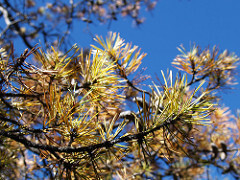 Changing Colors
Changing Colors
